How To Write A Blog Entry Format
How to write a blog post in 2021 - A beginner's guide
There's never been a better time to create your own blog

(Image: © Pixabay)
Blogging is an excellent way to build an online presence and share your passion with the world. However, writing a blog post for the first time can feel like a challenge, especially for those without any prior blogging experience.
It's essential to have a clear goal and strategy in mind when drafting a blog post – this will help save time, create better content, and reach potential readers faster.
In this article, we'll guide you through the steps on how to write a blog post and showcase some blog post ideas to get you started.
- We've built a list of the best blogging platforms available
What is a blog post?
A blog post is a piece of content that you publish on a blog. It can contain various media files which accompany the text, such as videos, images, and infographics.
Blog posts are the most effective form of content when compared to ebooks, email, and white papers. That's why many businesses place blogs as one of their primary marketing efforts when trying to generate leads with minimal effort and expense.
There are other benefits of creating blog posts, such as:
- Improving writing skills – creating a blog post helps you become a better writer. The more posts you write, the more you hone your blog writing skills.
- Gaining more knowledge – consistently blogging lets you stay well informed on the topic you're writing about, as well as slowly establish yourself as an expert in the field.
- Making money – blogging can become a full-time and well-paying job. Pat Flynn, the creator of Smart Passive Income, is a perfect example of a blogger who turned his hobby website into a successful blog, managing to earn over $100,000 in a month.
- These are the best laptops for writers
What exactly makes a good blog post?
One of the characteristics of a good blog post is that it addresses and solves readers' problems. In other words, it should provide helpful information and valuable takeaways that motivate readers to take action.
Here are some other traits of a good blog post:
- Personalized – a great post has a unique tone that readers can easily recognize, making them feel connected to the blogger on a personal level
- Sparks discussion – a good blog post generates discussion and inspires readers to tell their stories
- Readable – it's easy to understand and gets to the point quickly
Getting started with writing blog posts
Now that you know the characteristics of a great blog post, it's time to create informational and engaging content.
Here's how to write a blog post in ten simple steps:
1. Pick your niche and understand your audience
The first step of creating a blog post is to choose a niche – it's a specific area to center your content in.
Many new bloggers overlook this process and write blog posts about different topics. As a result, it can be hard to have the blog stand out from the competition and have readers coming back.

A Couple Cooks is an example of a blog that uses food as its topic and focuses on sharing knowledge and recipes specifically for home cooks as its niche.
Consider picking a niche that you're passionate about. It helps to keep you stay motivated and makes you less likely to run out of ideas.
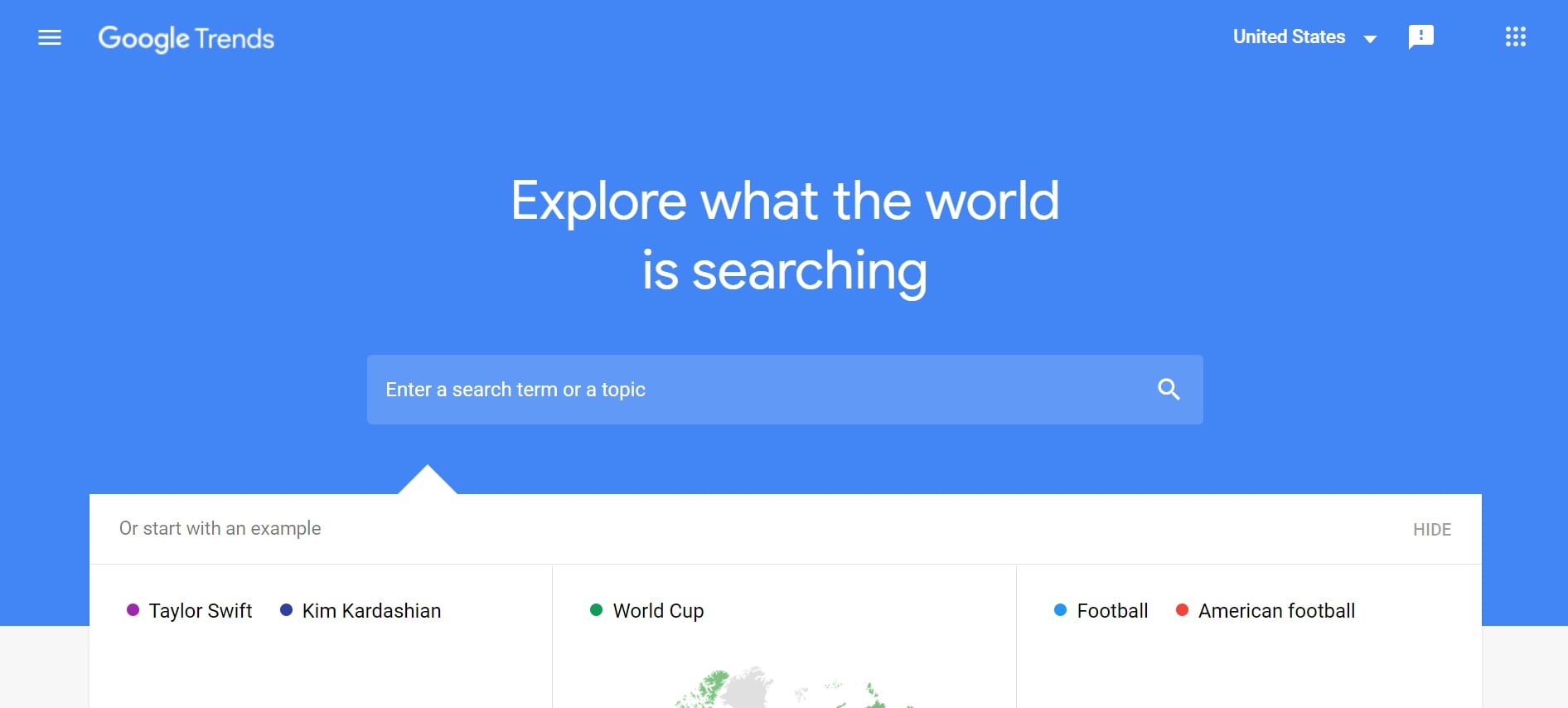
To pick the right niche, start by making a list of your hobbies and topics you know the best or enjoy learning and reading about. Then, use Google Trends to see which idea is stable or rising in popularity – it's better to choose one that can stay relevant for years.
Once you figure out the niche of your blog, it's time to define a target audience – a group of people who are most likely to resonate with your blog posts.

If you're unsure how to determine your target audience, try using social listening tools like TweetDeck and Awario. These websites can help you identify demographics that consistently talk about topics related to your niche on social media.
- We've also rounded up the best social media management tools

2. Choose your domain name
A domain name is the web address that people type in their browser to access a website. It's also part of site branding, helping your blog stand out from the others.
Your blog domain name will most likely stay the same for a long time and changing it later might affect a site's search engine optimization (SEO). Thus, make sure to choose a name carefully before buying a domain name.
Here's how to pick the best domain name :
- Keep it short and simple – a short domain name is more memorable than a long one. Ensure it's easy to pronounce by avoiding hyphens and numbers.
- Choose a popular extension – some credible domain name extensions such as .com and .me are easier to remember for most internet users.
- Use domain name generators – take advantage of some online tools such as Nameboy and Panabee to get hundreds of name ideas.
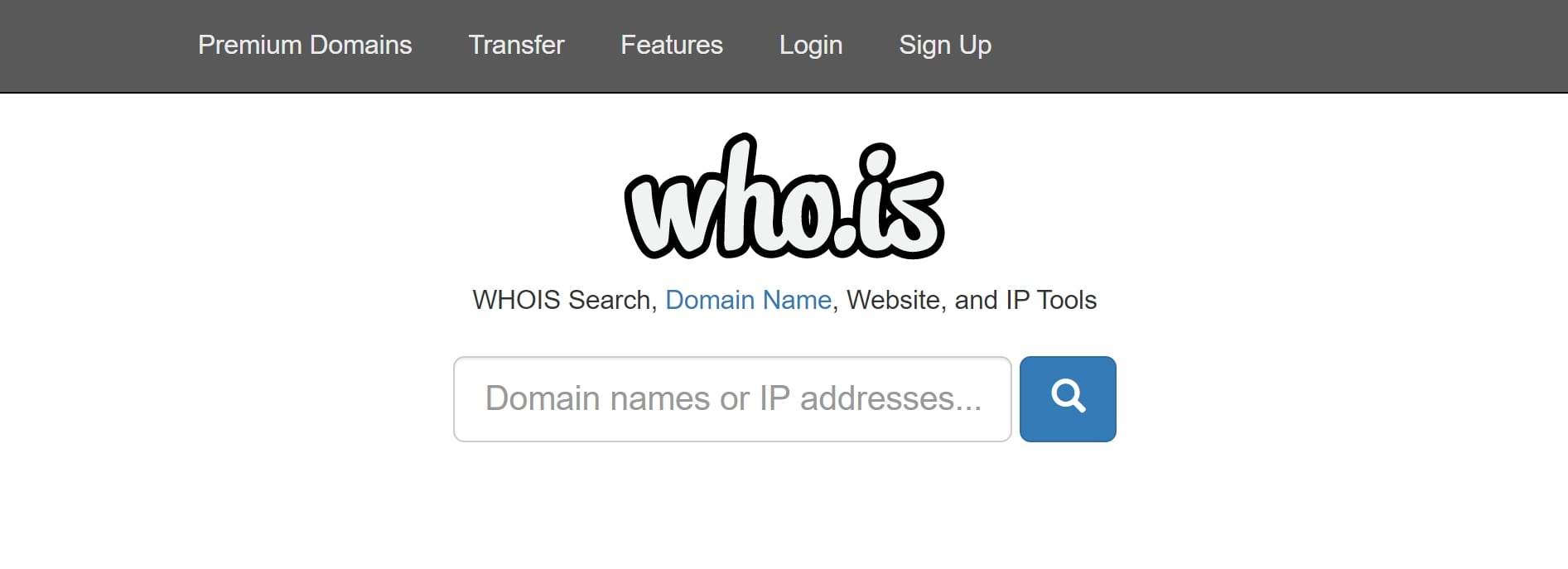
Once you get a domain name, make sure to check its availability using a free tool like WhoIS. It also lets you see the website address's history, preventing you from using a domain that might have been linked to a malicious website in the past.
Before using a domain, you will need to register it with a domain name registrar that ICANN authorizes. The price of a domain can start anywhere from $1.49/year, depending on the extension.
3. Choose your CMS and hosting platform
Once you find the best domain name for your blog, you will most likely want to pick a CMS to build your site with.
A content management system (CMS) is software with a graphical user interface that allows users without technical knowledge to create, manage, and modify blog content.
WordPress is one of the best and most popular content management systems on the market. This platform is free to use and easy to set up, making it an excellent choice for new bloggers.
Before creating a WordPress blog, it's necessary to purchase a web hosting service to store its content and make the site accessible online.
A hosting service should have all of the necessities for running a blog quickly and easily, such as a one-click WordPress installer, intuitive control panel, and a stable and fast server speed.
Some popular WordPress hosting providers to consider are Hostinger, Bluehost, and InMotion Hosting. Aside from providing all features needed to start a blog, these companies also offer cost-effective starting plans and reasonable renewal prices.
4. Chose your blog's theme
The next step to do is to pick a theme, which is a file that contains a pre-made layout. With a blog theme, users can build a site quickly without having to start from scratch.
Using a fitting and intuitive theme is crucial since it can affect visitors' first impression of a site. It only takes them 0.05 seconds to determine whether to leave or stay on a blog.
If you use WordPress, the WordPress official directory has over 8000 free themes to offer. However, some of these templates lack functionality, making premium themes a more attractive choice for websites that require complexity.
There are many third-party marketplaces that offer premium WordPress themes, such as ThemeForest and TemplateMonster.
Choosing one from thousands of WordPress themes can be overwhelming. Thus, it's good to have specific criteria to look for in a template.
Some of the essential aspects that a blog theme should have are:
- Responsiveness – since half of the global web traffic comes from mobile devices, pick a theme that can adjust to tablet, desktop, and mobile screen sizes
- Clean design – a blog theme should feature a simple and clean layout to help readers navigate and read an article easily. The Books Across is an example of a blog with a minimalist design that makes its content more readable
- SEO friendliness – a theme can also affect a blog's performance on search engines. Therefore, look for an SEO-friendly theme that has been developed according to up-to-date coding standards.
- Browser compatibility – it's essential for a theme to function correctly across major browsers like Firefox, Google Chrome, and Safari
- Updated regularly – using an outdated template can make a blog vulnerable to hacking attempts
After choosing a blog theme, modify the look to match your brand or content. For instance, if your blog posts involve fun or casual topics, consider using a bold color scheme or colorful illustrations and animations to liven your site.
- These are the best SEO tools for your website
5. Choose a writing topic
Before you write a blog post, it's essential to determine potential writing topics. This process can prevent writing blog posts about subjects that nobody is searching for.
A great way to find some topic ideas is to do keyword research – this will help find topics that are easy to rank.
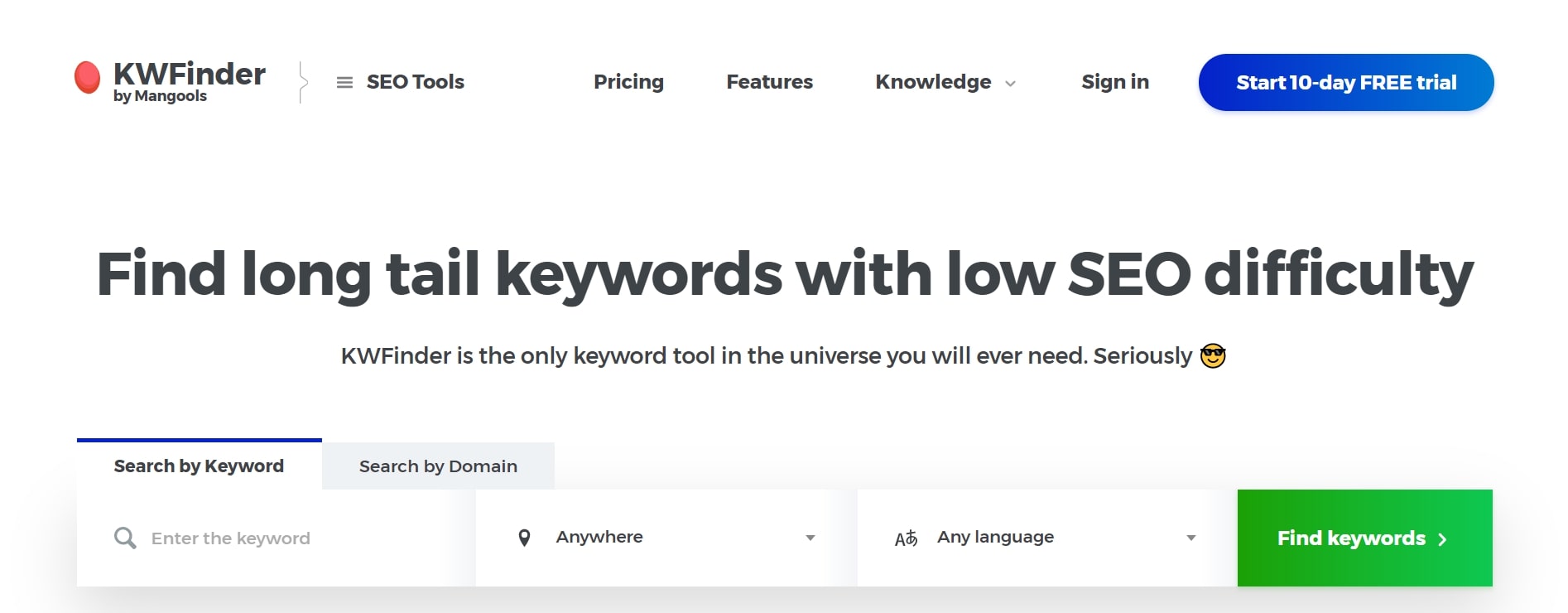
Start by making a list of five to 10 relevant terms based on your blog niche. Then, enter those terms into a keyword research tool like Answer The Public or KWFinder to see each keyword's search volume and search results number.
Before choosing a keyword as a blog post topic, consider these aspects:
- Search intent – a blog post can only rank for a keyword if it meets the users' search intent. Thus, verify the user's intent regarding a keyword by entering it into a search engine and reading the results that come up
- Trend history – use Google Trends to see whether a topic is stable, trending upward, or decreasing over time
- Search volume – the keyword search volume is the average number of times a term is entered on a search engine per month. This number also gives a general idea of keyword competitiveness
6. Work on a headline
Once you find a topic, it's time to write out a headline or a post title – it's the first thing in a blog post that people will notice.
Having a great headline helps convince visitors to click and read your content. It also has a significant impact on SEO.
To make readers interested in your articles, try to avoid vague headlines that are confusing. Instead, make the titles specific and get to the point fast, helping the audience know what to expect from the content.
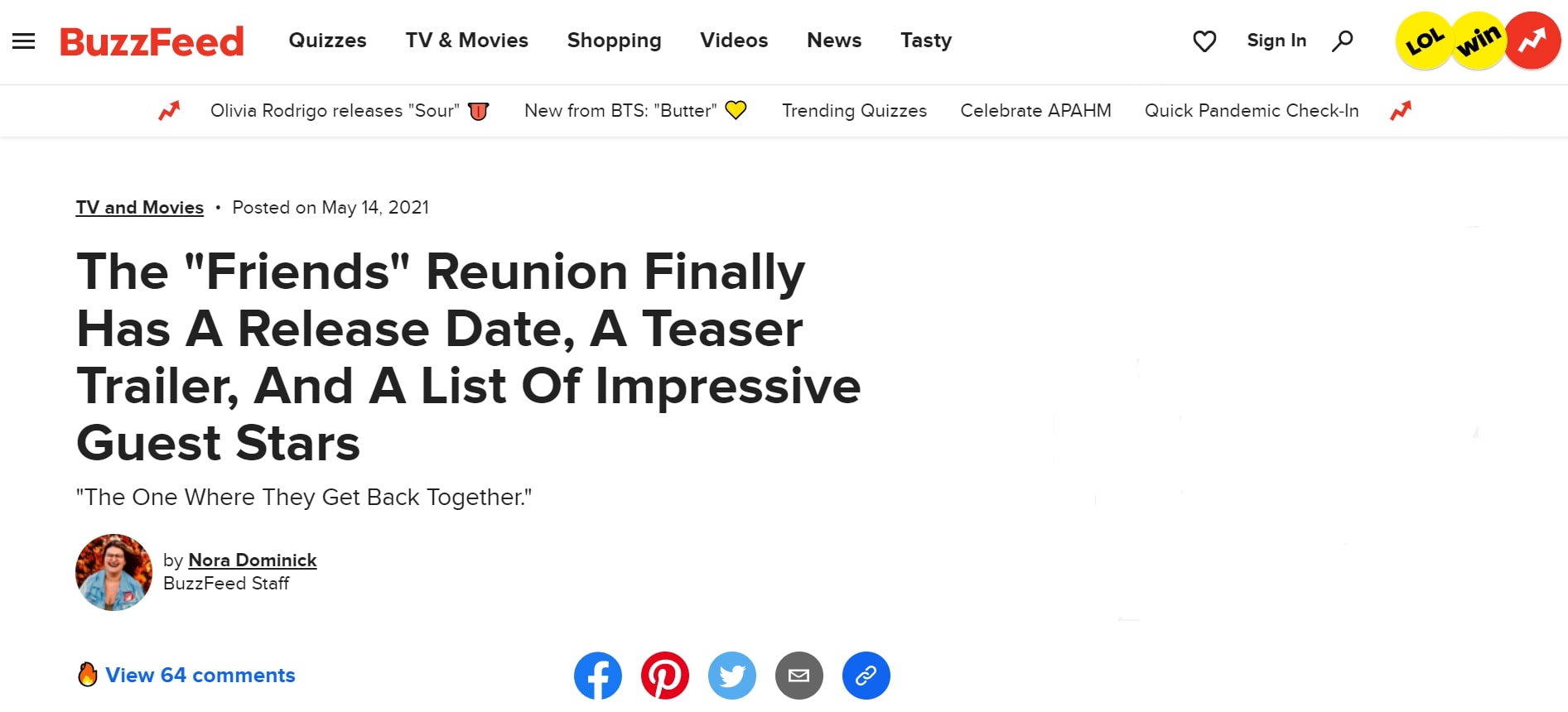
This Buzzfeed article is an excellent example of a headline that clearly states the essential points the content will be about:
If you don't know how to start writing headlines, consider, finding, testing, and tweaking different headline formulas to figure out which one works best for you.
Also, make sure to utilize these practices to create a headline that can grab the reader's attention:
- Include numbers – using numbers in headlines can provide clarity and notify readers how long an article will be. According to Conductor, a headline with a number also performs better than other types of headlines.
- Use hyphens and colons – a study by Outbrain shows that headlines with hyphens or colons performed 9% better than other titles
- Choose power words – when trying to come up with a catchy title, include power words that can help trigger emotion and incentivize action.

7. Prepare an outline
The next step before you can begin writing is to create an outline – the basic structure of a blog post.
Preparing an outline helps overcome writer's block and allows for the planning out and arrangement of ideas, keeping the article focused and on-point. Having a guide makes the writing process quicker and more efficient than starting from a blank page.
Before outlining, do a Google search on your topic and look at the section headers within the top-ranking articles. Then, pick the most helpful and relevant sections to include in your outline.
Once you have a list of potential sections, start creating bullet points of all the ideas you want to add under each section. Use a writing tool like Google Docs to write down your notes and complete the outline.
The last process is to ensure that each of the points is relevant to your topic and eliminate additional information that doesn't fit the scope of your article. Also, remember to arrange all sections and points into a logical order to make the writing flow better.
When preparing an outline, place data and facts supporting your ideas underneath each section. Doing this can save you time when writing the article.
8. Write the blog post based on your outline
Now that you have an outline, it's time to use it as a guide and start writing your first draft.
When writing a blog post, it's essential to keep the word count in mind since the length of a post can affect your SEO. Google tends to rank lengthy posts higher on search results, so try to produce an article with at least 2,100-2,400 words.
To create a great blog post, refer to these blog writing tips:
- Create a compelling opening – use the introduction to grab the readers' attention by addressing their problem and telling them that your post can help solve it.
- Utilize keywords throughout your post – use SEO tools like SEMrush to find relevant keywords. Place those terms in your article to help search engine crawlers understand what your content is about.
- Use short sentences and easy words – simplify writing and make a post easier to read.
- Leverage writing tools – platforms like ProWritingAid and Hemingway Editor help bloggers to write with power and improve their articles' clarity.
- Utilize bullet points – people tend to skim content instead of reading the whole post. Therefore, try to make the article easily scannable by using bullet points.
- Add relevant images – pictures can make the text easier to understand and boost engagement rates.
- Include a call-to-action – convince readers to take action, such as signing up for an email newsletter, sharing the post on social media, or leaving a comment.
If you're stuck on a specific section when writing a draft, feel free to put it aside and move to another section. This process can help you push through the mental block, providing a fresh perspective when you come back to it.
9. Edit your post
Editing your first draft is a crucial step of the writing process. You shouldn't just fix the grammar and sentence structure, but also make the article more engaging and appealing.
However, self-editing can be challenging. Consider asking a friend to do this process – someone with a fresh pair of eyes might help spot any overlooked issues or errors. Alternatively, hire an editor to give you feedback and make edits for you.
If you prefer to do the whole process yourself, use this checklist to start editing the blog post:
- Fact check – double-check all links and research to make sure your content is accurate, and all sources are reputable.
- Proofread – find and correct any spelling and grammar errors, typos, and repetitive sentences. Consider using tools like Grammarly for this process.
- Visual appearance – ensure that the post has a consistent format and style, from headers to screenshots. Maintaining consistency makes the article look more professional.
- Add a featured image – remember to add an attractive featured image to the post – this can help generate more clicks and shares.
- Assign the blog post to a category and tag – categories and tags tell a search engine how it should treat content in regards to searches and help visitors navigate a blog with ease.
- These are the best free writing software solutions on the market

10. SEO optimize your blog post
The last step before publishing your new blog post is to optimize it for search engines. Blog posts that rank high on search engine results pages (SERPs) can bring more traffic to the website.
There are many important on-page SEO practices that will make a blog post rank high on search results. One of them, for example, is compressing images – reducing the size of pictures can improve page load times, which is one of the ranking factors.
Here are more tips on how to optimize blog posts for SEO:
- Add a meta description to your article – a meta description is an additional text that appears in SERPs, providing a short description of an article. Meta descriptions let readers know what a link is about and help improve an article's click-through rate (CTR).
- Create and submit a sitemap of your blog – a sitemap is a file that lists the important pages of a website, ensuring Google can efficiently find and crawl them.
- Include image alt text – image alt text is a description that helps search engine crawlers understand the context of a picture. It can also improve accessibility and is a factor in search engine rankings.
- Write a good and relevant SEO title – it's crucial to create a good title tag as it's one of the factors that a search engine uses to determine whether a page is relevant to a search query.
- Use Google Search Console – monitor your SEO performance using Google Search Console. This tool can show every keyword a blog currently ranks for in Google.
- Also check out our list of the best onpage SEO tools
Blog post ideas to get you started
There are many blog post ideas to consider for your first article. One of the most common ones is the ultimate guide post, which provides steps to solve readers' problems.
Below is an example of an ultimate guide post by GamesIndustry.biz, which shares some methods on how to sell indie games.
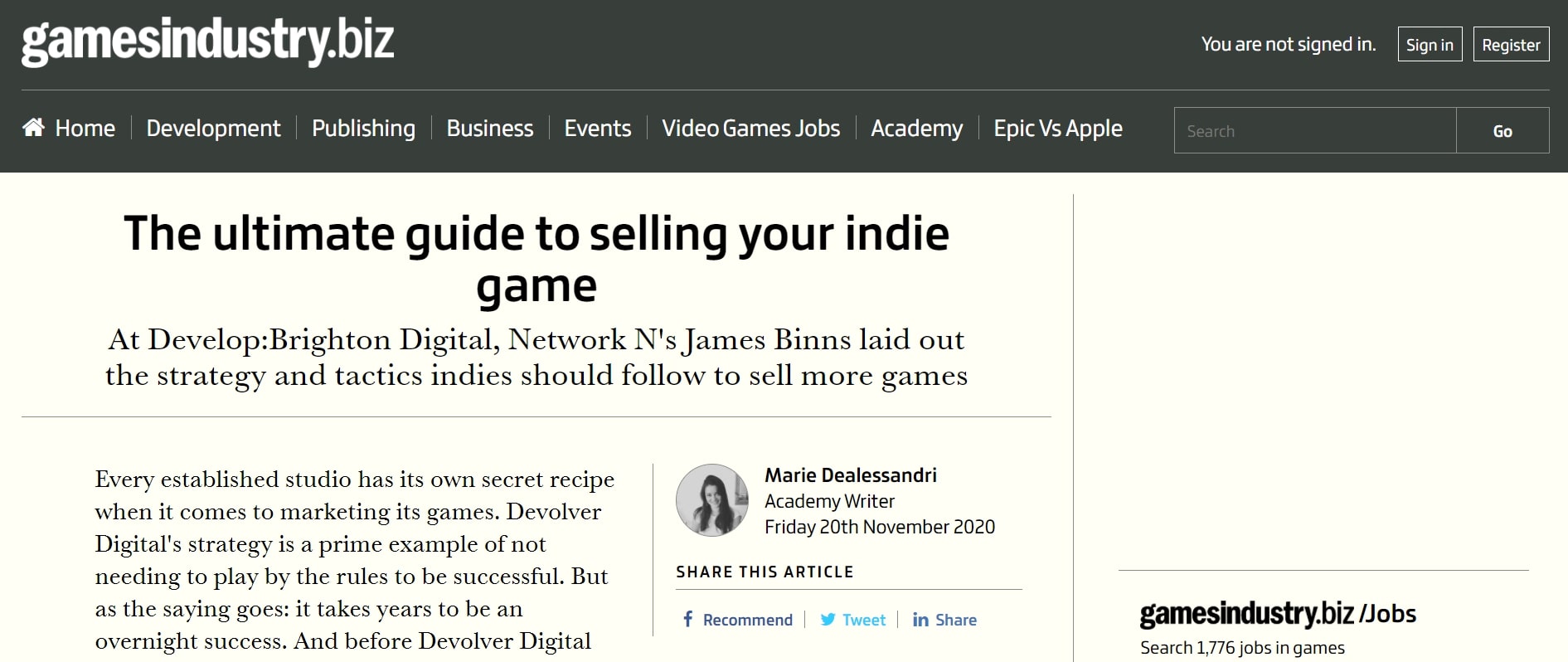
Here are other content ideas to try:
- The infographic post – this blog format is excellent for presenting visual tips and compiling data and statistics.
- The comparison post – this blog post idea compares the differences and similarities between two subjects to help readers make a decision.
- The what post – the purpose of this type of article is to introduce and explain why readers should care about a specific concept.

- The list-based post – a list-based article, or a listicle, is easy to plan, write, and update, since it's always possible to add extra items without disrupting the flow of the content. Garden Betty's article is an example of a list-based post.
How to write a blog post
Blog posts can help you reach a wide demographic, turn visitors into loyal readers, and establish yourself as an expert in the industry.
High-quality content usually comes with valuable takeaways that are able to solve readers' problems. It also has a unique tone, sparks discussion, gets to the point, and features good flow.
It's easy to craft an awesome blog post if you have a clear goal to achieve and a plan to guide you through the writing process.
Here are the steps on how to write a blog post:
- Pick your niche and understand your audience
- Choose your domain name
- Choose your CMS and hosting platform
- Choose your blog's theme
- Choose a writing topic
- Work on a headline
- Prepare an outline
- Write the blog post based on your outline
- Edit your post
- Apply SEO practices to your blog post
If your goal will be to produce valuable and engaging content for the readers, traffic and high search engine rankings will follow naturally.
- We've also highlighted the best blogging sites

Désiré has been musing and writing about technology during a career spanning four decades. He dabbled in website building and web hosting when DHTML and frames were en vogue and started writing about the impact of technology on society just before the start of the Y2K hysteria at the turn of the last millennium. Then followed a weekly tech column in a local business magazine in Mauritius, a late night tech radio programme called Clicplus and a freelancing gig at the now-defunct, Theinquirer, with the legendary Mike Magee as mentor. Following an eight-year stint at ITProPortal.com where he discovered the joys of global techfests, Désiré now heads up TechRadar Pro. He has an affinity for anything hardware and staunchly refuses to stop writing reviews of obscure products or cover niche B2B software-as-a-service providers.Managing Editor, TechRadar Pro
How To Write A Blog Entry Format
Source: https://www.techradar.com/how-to/write-a-blog-post
Posted by: garciathervice.blogspot.com

0 Response to "How To Write A Blog Entry Format"
Post a Comment